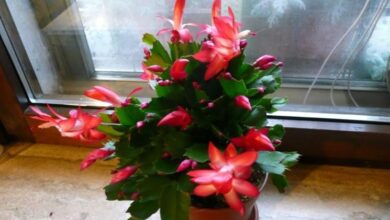Thin leaves in Aloe Vera. Causes and Solution

Do you want to know why Aloe Vera or Aloe Vera leaves lose gel and become thin and curved? The reason why this precious gel is being consumed is unique: Lack of water in the roots of the plant.
There are four reasons why water does not reach the root of your Aloe Vera:
- Lack of irrigation. In fact, you are watering little or less than your Aloe Vera needs.
- The substrate is too compact . Sometimes poorly draining substrates create an impermeable zone around the roots.
- The pot is very large and the water does not go to the roots . While the soil around the roots may be wet, this water is not going where it should; The root of the plant.
- Excessive heat . The water evaporates too quickly and the roots do not have time to assimilate the water they receive.
Thanks to your questions on the YouTube channel and on the web, I decided to leave one of my aloes without water while the others did receive water. All other conditions were the same for all plants, but one did not receive any water for several months, in order to test my theory that dehydration of the plant is a consequence of a lack of water in the roots .
As it does not have water, the plant uses the gel inside the leaves to grow. In my opinion, the four reasons mentioned above are the ones that make your aloe not receive water at its roots and therefore dehydrate.
Dehydration after a big change
According to the emails, comments and messages that I receive from you, in most cases these problems usually occur when you change the pot plants, substrate or location.
Some colleagues left me these messages:
The leaves on my aloe plant have gone from plump and gel-filled (when I bought it last month) to ultra-thin, curved, tube-shaped leaves. Two outer leaves are completely dry, with a third already gone after drying. The rest of the leaves are still firm and mostly vertical, although very thin and hollowed out.
About a week or two after I purchased my aloe, I substituted cactus soil mixed with stones for the soil. I also swapped the planter for a terra cotta planter with a large drainage hole. I located the plant near the balcony door facing northwest.
I watered about once every 1-2 weeks (the first few months that were super hot), and about every 2 1/2 weeks the next when it was less hot.
Since then, the plant had gradually become thinner, with its outer leaves drying out, and looking dangerously haggard overall. So, a few months ago I dug up to check the roots, which looked thinner and shrunken than they originally were, but still mostly white. I couldn’t tell if the darker roots were dying or just covered in dirt. The floor was completely dry and there was no smell.
Manuel M.
Good morning, I decide to write to you to see what you think of my poor aloe that I do not know what to do to make it healthier … I am already crazy to know if I water more or less … Reading and rereading I decided to change it to a new location where the sun does not shine directly on him, at least not as much as before that it gave him quite a few hours…. When I bought it I changed it to a bigger pot because it was too small.
S FP

Solution to the problem
To solve this lack of gel in our plants we have to be very clear about the cause: Lack of water in the roots. You have to be very clear about this, it is not a lack of water in the earth, it is in the roots!
Once we understand the problem, we must see what is the reason that prevents these roots from hydrating and find a solution.
In my opinion, it is best to buy a terracotta pot like these , use a well-draining substrate like these , place the plants in a place where they will not get direct sun or suffer from excess temperature.
With these changes everything should go well but first of all, check these super useful articles for your Aloes or Sabilas:
- How to make your own substrate for succulents.
- My recipe for Aloes substrates.
- How to water your aloes the right way.
- How much light do aloes need?
- Why are soft leaves put on Aloes?
I hope that with this you will be able to solve the problems of your aloe and for any questions, do not hesitate to write to me.




